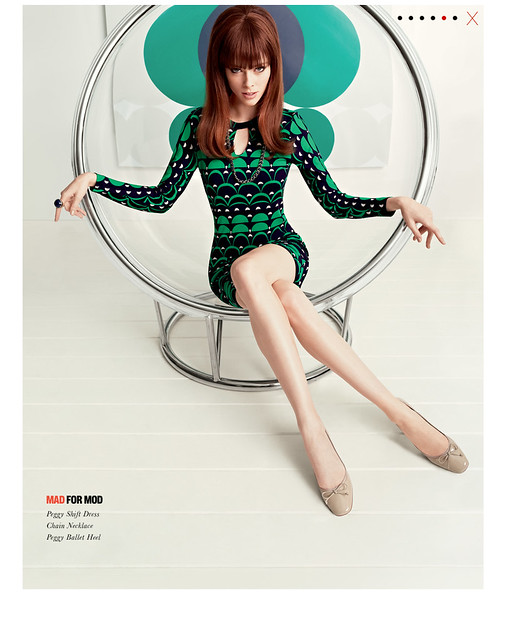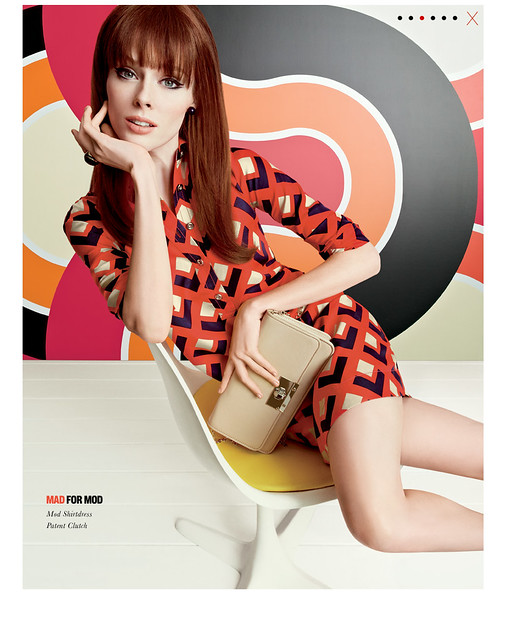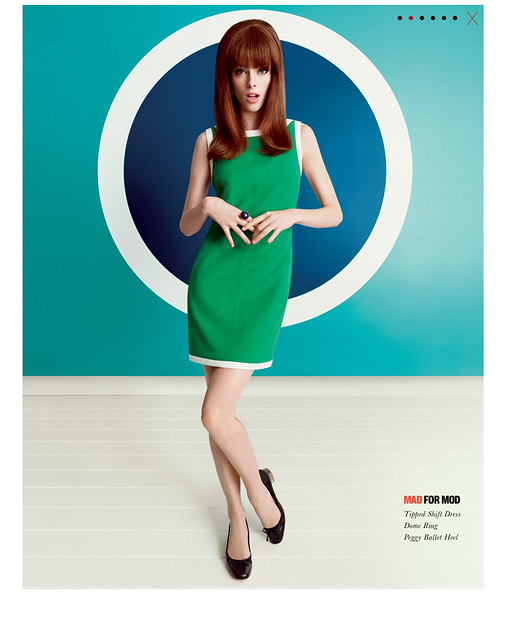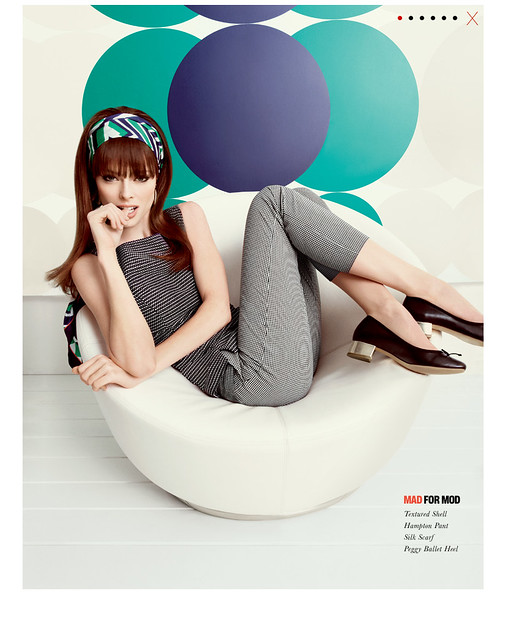Ever since I heard about Banana Republic's latest Mad Men capsule collection, I've been in full 'Mod mode'. I can’t help it. The collection has outdone itself, perfectly encapsulating what true mod style was: minimal and modern. Draped over retro furniture wearing bold graphic prints, bright colours and classic 1960s shapes, Coca Rocha demands to be noticed. And in my opinion, so should we.




But what is it about mod fashion that’s so appealing? For me, it’s not just about the colour, clean lines and vibrancy of the style. It’s also about what this style meant to the women who wore it at the time. After all, for women, the 1960s was an era of emancipation. Women’s liberation groups were springing up all over the United States. For the first time, discrimination based on sex became illegal and women were able to buy birth control pills.
For centuries, women have made up for their lack of rights by expressing themselves through fashion. And the 1960s were no exception. As a decade of defining styles and revolutionary ideas, young people began pushing the boundaries of what was socially acceptable. And against this backdrop, mod fashion exploded onto the scene. The results were legendary and long-lasting. Thanks to Mary Quant, we saw the advent of the mini skirt, while powerful retro prints became a beacon of individuality, power and independence for young women. After all, these weren’t the styles to wear if you wanted to slink off into the background. These women wanted to be noticed.
So as you browse through the latest styles in Banana Republic’s range, spare a thought for the women who broke new ground by embracing mod style, and contributed towards securing the rights that many of us now take for granted. And in honour of these women, who could well be our mothers, neighbours, aunts or grandmothers, why not replicate that perfect mod look for yourself?

